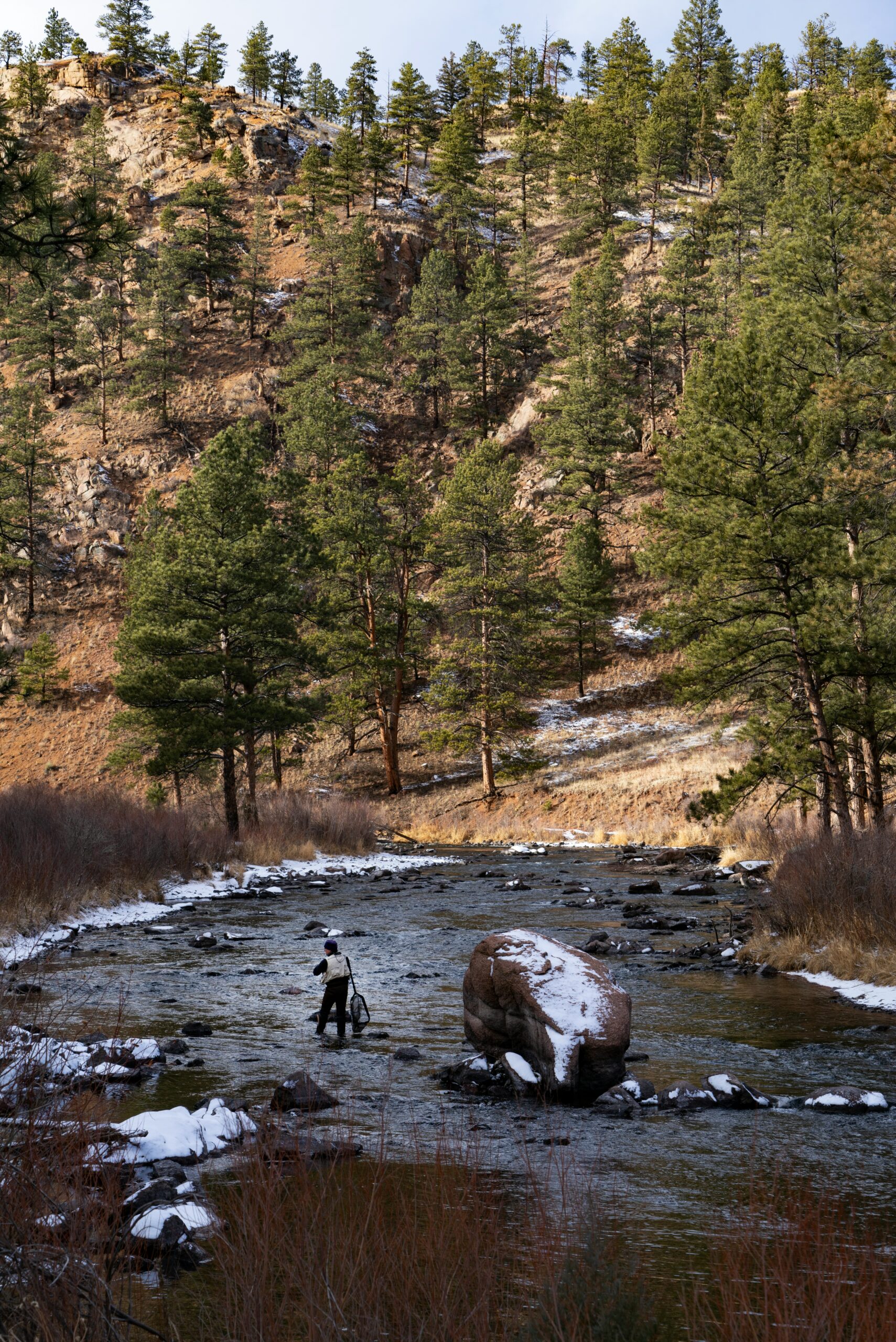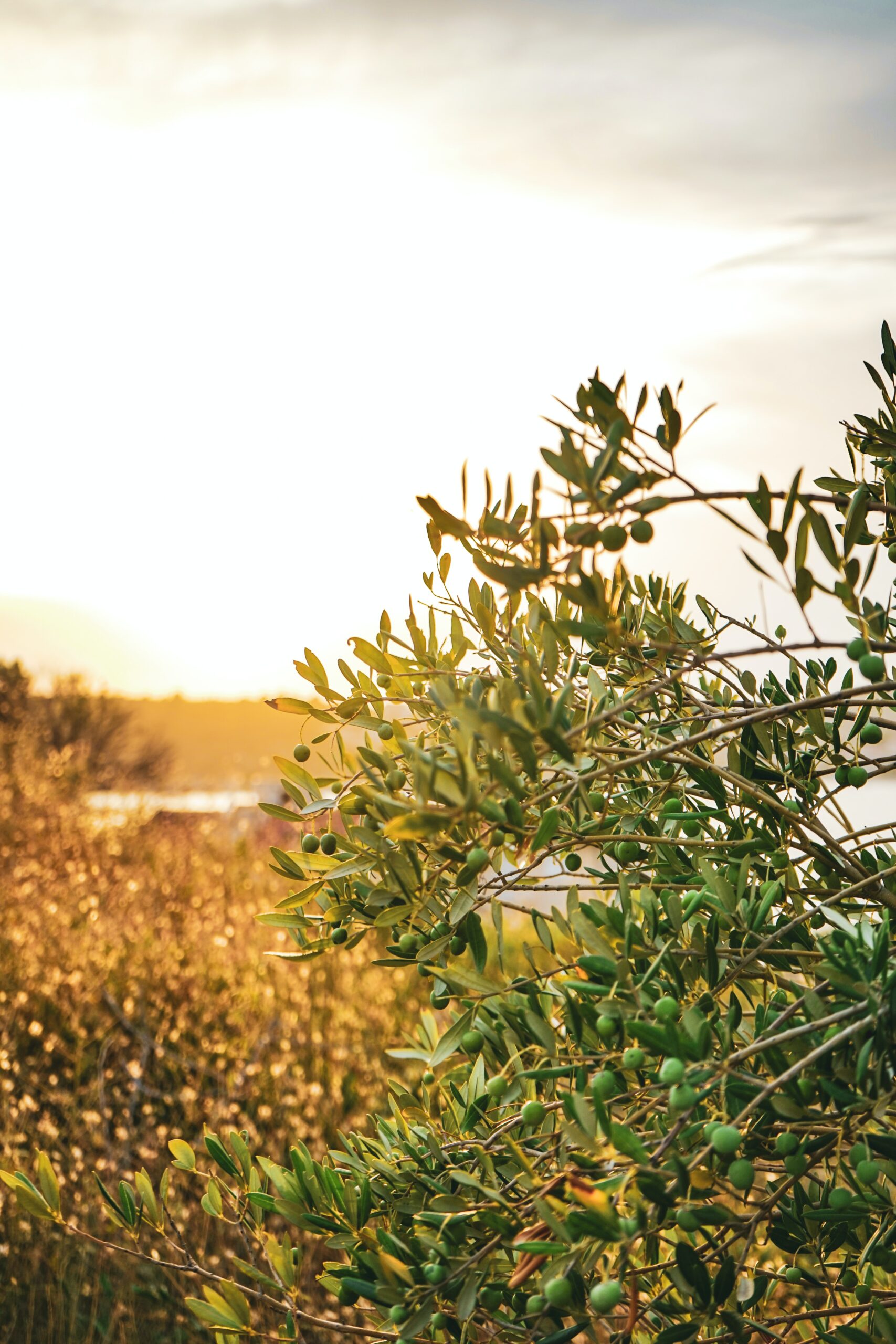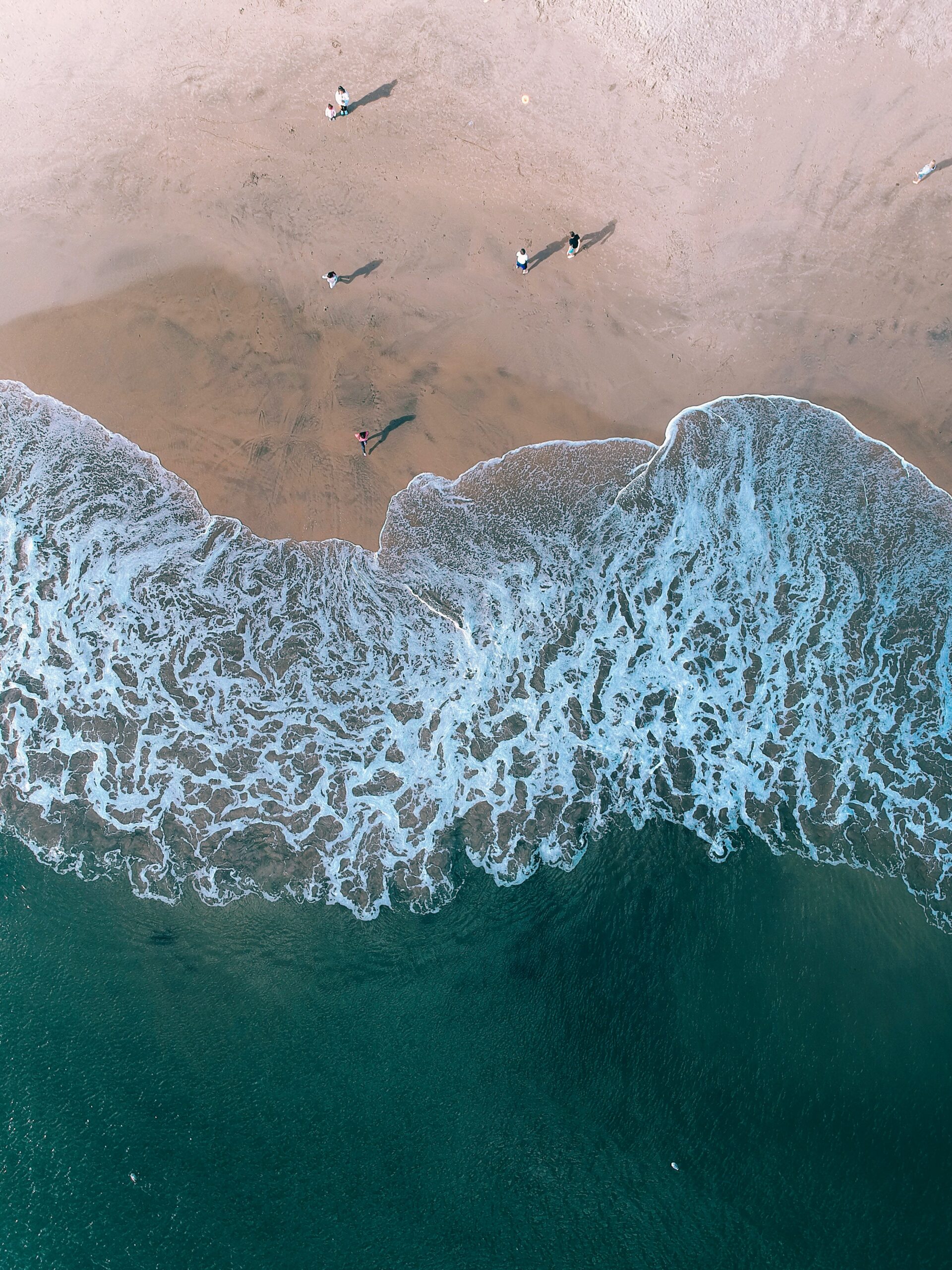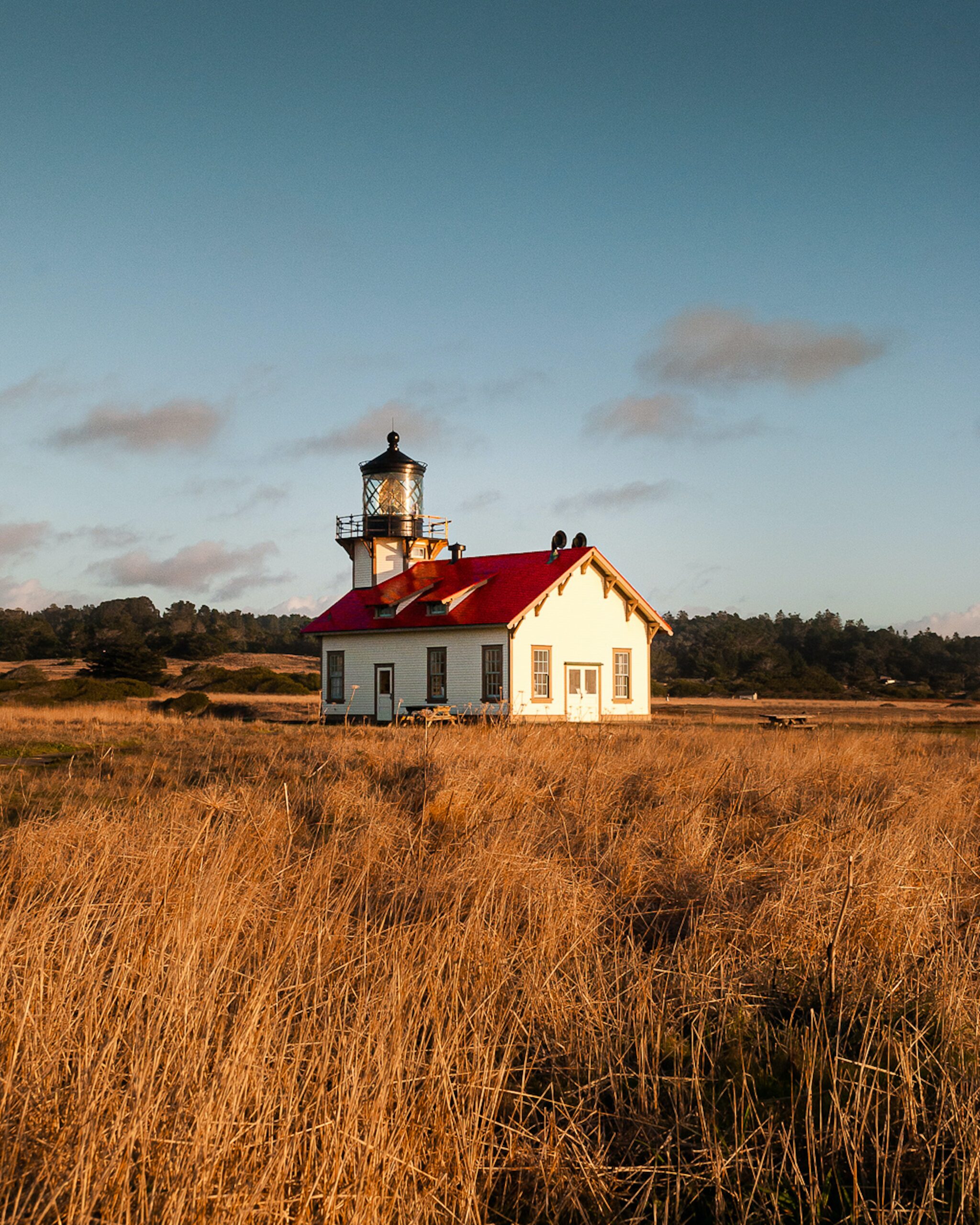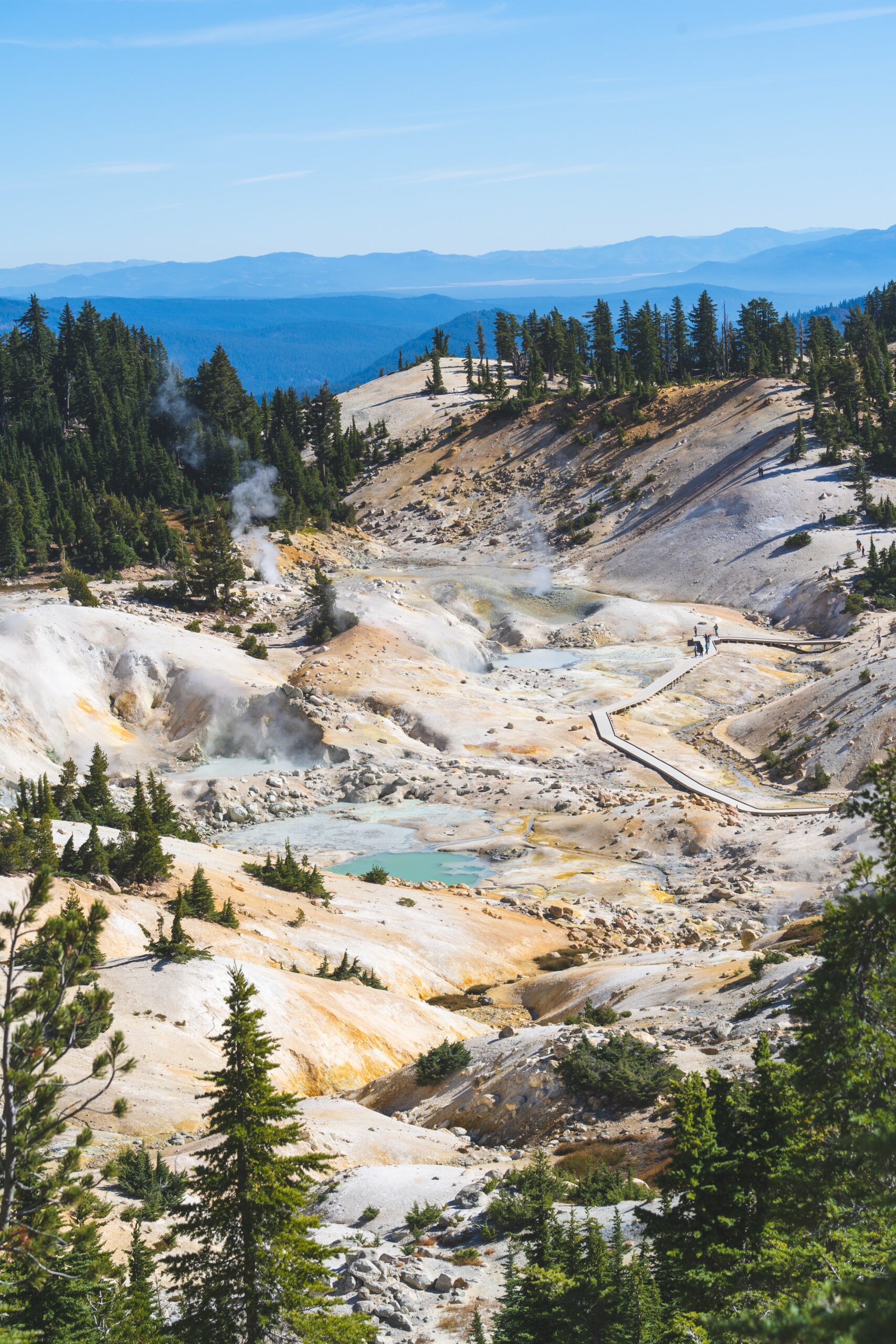Guide to Fly Fishing Northern California: Top Spots for Anglers to Cast Their Lines
Northern California is a fly fishing paradise, offering some of the best opportunities to cast your line and reel in trophy trout. From pristine mountain streams to scenic coastal rivers, you'll find an abundance of stunning locations to practice your craft. The region boasts world-class fly fishing destinations like Hat Creek, McCloud River, and the East Fork of the Carson River, where wild trout thrive in crystal-clear waters.
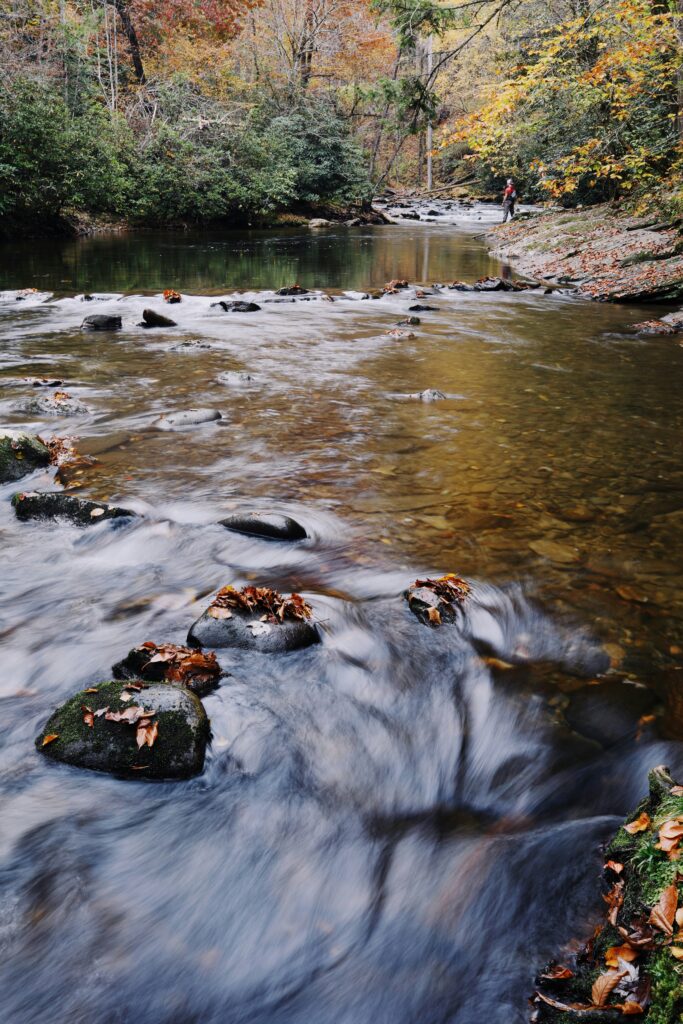
As you explore Northern California's diverse waterways, you'll encounter a variety of fish species, including rainbow trout, brown trout, and steelhead. The Six Rivers National Forest is a hidden gem, offering access to the Smith River and several high-elevation lakes stocked with fish. Whether you're a seasoned angler or new to the sport, these waters provide exciting challenges and unforgettable experiences.
To make the most of your fly fishing adventure in Northern California, it's essential to choose the right flies and techniques for each location. Popular patterns like the Flashback Hare's Ear Beadhead can be highly effective in rivers like the Fall River, known for its abundant rainbow trout population. With proper preparation and knowledge of the local waters, you're sure to create lasting memories on your Northern California fly fishing journey.
Guide to Fly Fishing Northern California: Top Spots for Anglers to Cast Their Lines
Fly Fishing Basics
Fly fishing is an exciting and rewarding way to catch fish in Northern California's beautiful waters. You'll need some specialized gear and techniques, but with practice, you can become proficient. Remember to always follow ethical fishing practices to help preserve these pristine ecosystems.
Understanding Fly Fishing Gear
To get started, you'll need some essential equipment. Your fly rod and reel are the heart of your setup. Choose a weight that matches the fish you're targeting and the conditions you'll face.
Fly lines come in various types, but a weight-forward floating line is versatile for beginners. Don't forget leaders and tippets to connect your line to the fly.
Speaking of flies, stock your box with a variety of patterns. Dry flies, nymphs, and streamers can all be effective in Northern California waters.
Waders and boots will keep you dry and comfortable while fishing. A vest or pack can help organize your gear on the water.
Fly Fishing Techniques
The overhead cast is fundamental to fly fishing. Practice this three-step process:
- Back cast: Raise your rod tip to the 10 o'clock position
- Pause: Allow the line to straighten behind you
- Forward cast: Bring the rod forward to the 2 o'clock position
Other important techniques include:
- Mending your line to achieve a drag-free drift
- Reading the water to identify likely fish holding spots
- Presenting your fly naturally to entice strikes
Try using a longer leader (11-12 feet or more) for better presentations in clear water.
Fishing Etiquette and Conservation
As you enjoy Northern California's 189,454 miles of rivers and streams, it's crucial to practice responsible angling. Always follow local regulations and obtain necessary licenses.
Use barbless hooks to minimize harm to fish, and practice catch-and-release when appropriate. Wet your hands before handling fish to protect their protective slime coat.
Be mindful of other anglers and give them space. When wading, avoid disturbing spawning beds or sensitive aquatic habitats.
Pack out what you pack in, leaving no trace of your visit. By following these principles, you'll help ensure great fly fishing for generations to come.
Northern California's Premier Rivers
Northern California boasts some of the finest fly fishing rivers in the country. These pristine waterways offer anglers diverse experiences, from challenging rapids to tranquil stretches, all teeming with prized fish species.
Sacramento River Explained
The Sacramento River is a fly fishing paradise. You'll find an abundance of wild rainbow trout in its cool, clear waters. The river's tailwater section below Shasta Dam is particularly productive year-round.
Drift boats are popular for accessing prime fishing spots. You can expect to catch trout averaging 16-18 inches, with some trophy fish exceeding 20 inches. The river's insect hatches are diverse, including mayflies, caddisflies, and stoneflies.
Best fishing techniques include nymphing, dry fly fishing, and streamer fishing. Remember to check local regulations, as some sections are catch-and-release only.
The Rugged Klamath River
The Klamath River offers you a rugged fly fishing experience. Known for its steelhead runs, it's a favorite among anglers seeking a challenge. The lower Klamath is best fished from late summer through fall when steelhead enter from the ocean.
You'll find both half-pounders (juvenile steelhead) and adult steelhead here. The river also supports a healthy population of resident rainbow trout. Drift boats and rafts are common for accessing remote sections.
Popular flies include nymphs, streamers, and swinging flies for steelhead. Be prepared for varying water conditions and bring appropriate gear for larger fish.
Majestic Trinity River
The Trinity River is renowned for its scenic beauty and excellent steelhead fishing. You'll find both wild and hatchery-raised steelhead in its waters. The best time to fish is from fall through spring.
Fly fishing techniques include nymphing, swinging flies, and indicator fishing. The river's clear waters allow for exciting sight fishing opportunities. You might also encounter resident rainbow trout and occasional salmon.
Wading is possible in many sections, but a drift boat can help you cover more water. Local guides can provide valuable insights into current fishing conditions and hotspots.
Quiet Waters of Fall River
For a unique fly fishing experience, visit the Fall River. This spring-fed river offers crystal-clear waters and abundant aquatic insect life. You'll find healthy populations of wild rainbow trout here.
Fishing is strictly catch-and-release to preserve the quality of the fishery. Only non-motorized boats are allowed, creating a peaceful atmosphere. The river's slow current and clear water make it ideal for sight fishing.
Mayfly and caddis hatches are common, providing excellent dry fly fishing opportunities. Small nymphs and midges are also effective. Practice your stealthy approach, as the clear water can make trout wary.
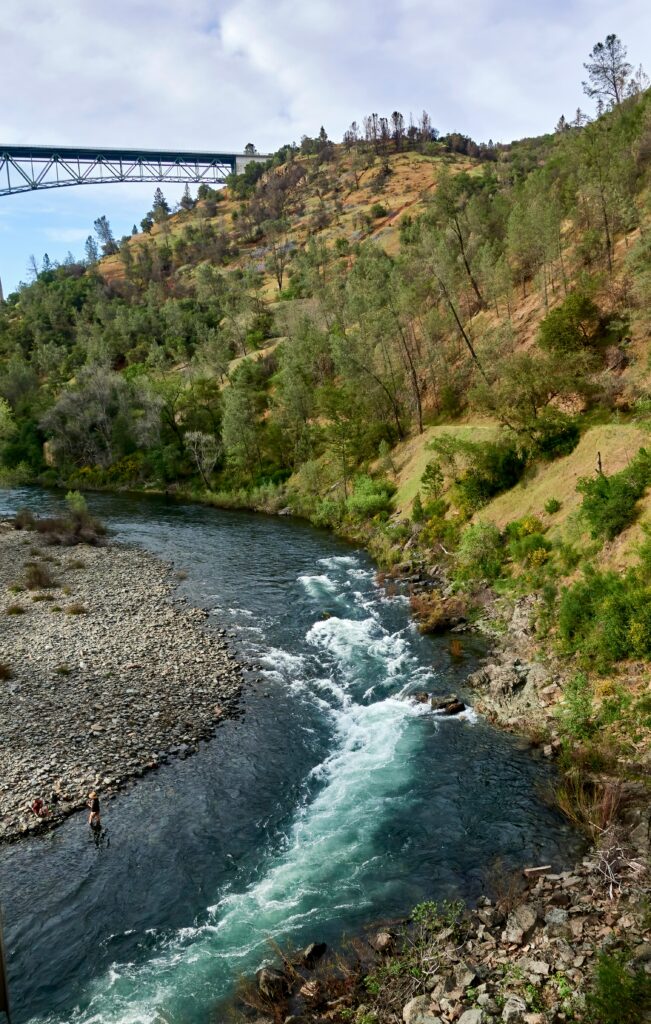
Target Species in Northern California
Northern California offers a diverse array of prized fish species for fly anglers to pursue. From the acrobatic rainbow trout to the powerful Chinook salmon, each target presents unique challenges and rewards.
Pursuing the Wild Rainbow Trout
Rainbow trout are the crown jewel of Northern California's fly fishing scene. You'll find these vibrant fish in abundance throughout the region's rivers and streams. The Upper Sacramento River is a prime spot to test your skills against these feisty fighters.
When targeting rainbows, try using:
- Dry flies during insect hatches
- Nymphs for subsurface action
- Streamers to imitate baitfish
Rainbow trout are known for their spectacular leaps and powerful runs. Be prepared for an exhilarating fight when you hook into one of these beautiful fish.
In Search of the Elusive Steelhead
Steelhead, the sea-run form of rainbow trout, offer an incredible challenge for fly anglers. These powerful fish return to Northern California's coastal rivers to spawn, providing a thrilling opportunity for you to test your skills.
Popular steelhead rivers include:
- The Trinity River
- The Klamath River
- The Smith River
Steelhead fishing requires patience and persistence. You might spend days casting before hooking into one of these silver torpedoes. But when you do, the explosive strikes and blistering runs make it all worthwhile.
Chasing the Native Brown Trout
Brown trout, while not native to California, have established themselves as a prized catch in many Northern California waters. These cunning fish are known for their selective feeding habits and wary nature.
You'll find excellent brown trout fishing in:
- The McCloud River
- Fall River
- Hot Creek
Fall River is particularly noted for its clear waters and challenging dry fly fishing for browns. These fish often require precise presentations and careful approach to fool.
Seeking the Mighty Chinook Salmon
Chinook salmon, also known as king salmon, provide an epic fly fishing experience in Northern California's coastal rivers. These powerful fish return from the ocean in impressive numbers, offering you the chance to tangle with a true heavyweight.
Key periods for Chinook fishing:
- Spring runs (April-June)
- Fall runs (August-November)
When targeting Chinooks, be prepared with heavy tackle and large flies. The Sacramento River Delta is a prime location for pursuing these silver giants. The thrill of hooking into a 20+ pound salmon on a fly rod is an experience you won't soon forget.
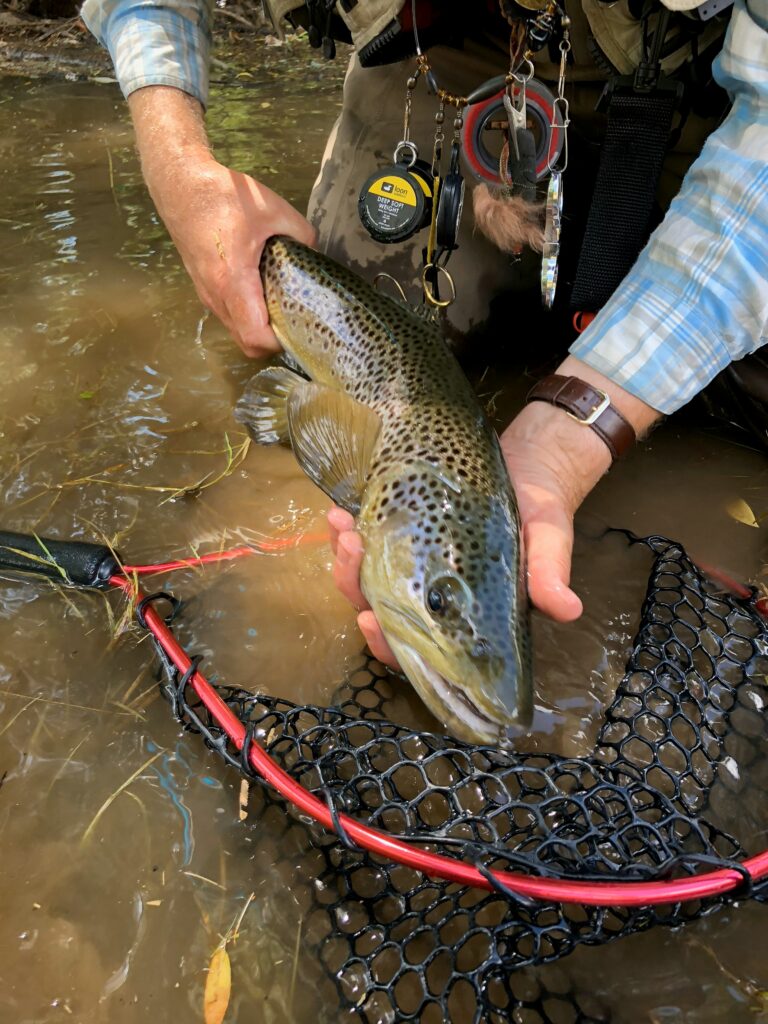
Flies and Hatches
Selecting the right fly and matching the hatch are crucial skills for successful fly fishing in Northern California. Your fly box should contain a variety of nymphs, dry flies, and streamers to cover different fishing scenarios and seasons.
The Art of Choosing Nymphs
Nymphs are essential for imitating subsurface insects. In Northern California, you'll want to stock up on dark-colored nymphs in sizes #14-18, like the popular Missing Link pattern. These versatile flies can imitate various aquatic insects.
When fishing nymphs, pay attention to the river bottom. Rocky areas often hold stonefly nymphs, while softer bottoms are home to mayfly nymphs. Adjust your fly choice and presentation accordingly.
Don't forget about caddis larva patterns. These can be highly effective, especially during spring and early summer when caddis hatches are common in many Northern California rivers.
Dry Flies and Surface Feeding
Dry fly fishing is exciting, as you can watch fish rise to take your fly. Stock your box with patterns like Adams, Elk Hair Caddis, and PMDs in sizes #12-18. These versatile flies can imitate various insects.
During the famous Hexagenia limbata hatch on Fall River and Lake Almanor, use larger dry flies in sizes #6-8. This hatch typically occurs in June and July, providing excellent opportunities for surface action.
Remember to carry some terrestrial patterns like ants and grasshoppers. These can be particularly effective during late summer when land-based insects become more prevalent in trout diets.
Streamers for Aggressive Predators
Streamers are your go-to flies for targeting larger, more aggressive fish. They imitate baitfish and can trigger predatory instincts in trout and other species. Popular patterns include Woolly Buggers, Muddler Minnows, and Sculpins.
When fishing streamers, vary your retrieve speed and depth. Sometimes a slow, deep presentation works best, while other times a faster, erratic retrieve near the surface can trigger strikes.
In Northern California's larger rivers and lakes, don't hesitate to use bigger streamers. They can attract trophy-sized fish that might ignore smaller offerings.
Seasonal Hatches to Know
Understanding seasonal hatches will greatly improve your fly selection. In spring, focus on mayfly and caddis hatches. Patterns like Blue-Winged Olives and Pale Morning Duns are often effective.
Summer brings the Hexagenia hatch to some waters, as well as increased terrestrial activity. Stock up on ant and beetle patterns for this time of year.
Fall sees the emergence of the October Caddis, a large orange fly that trout eagerly feed on. Carry both dry and nymph imitations of this important hatch.
Winter can be slower, but midges are often still active. Small nymph and dry fly patterns in sizes #18-22 can produce results on mild winter days.
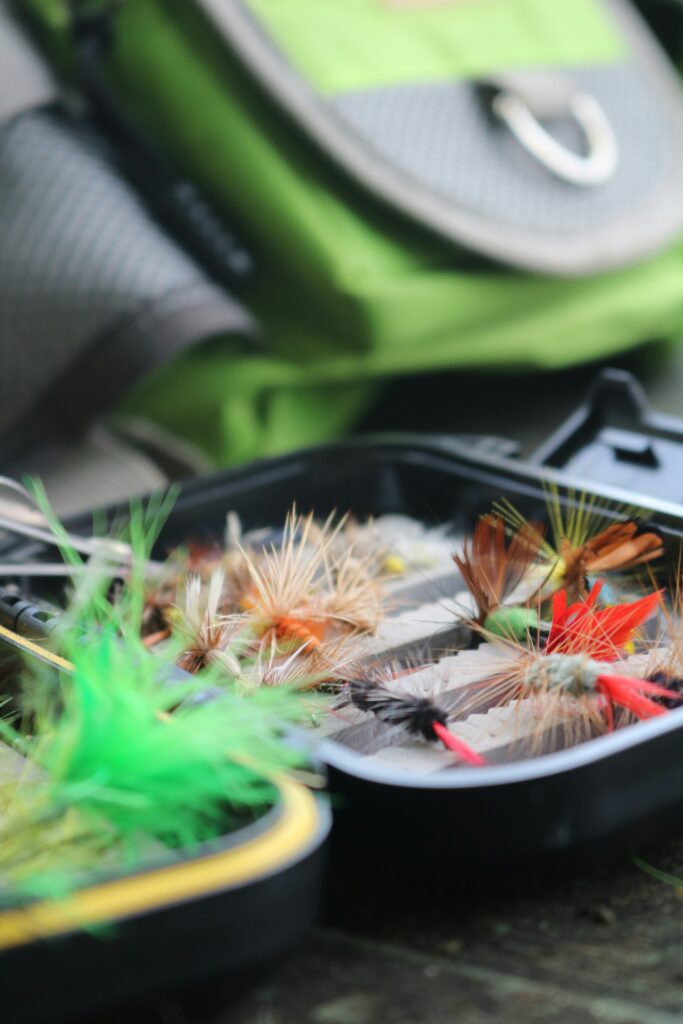
Fly Fishing Guides and Services
Northern California offers exceptional fly fishing opportunities with experienced guides ready to enhance your angling experience. Professional services can help you discover hidden gems and improve your technique while ensuring a memorable fishing adventure.
Hiring Professional Guides
Professional fly fishing guides in Northern California bring extensive knowledge of local waters and fishing conditions. They can teach you new techniques and help you target specific species. Many guides are Orvis-endorsed, ensuring high-quality service and expertise.
When selecting a guide, consider:
- Experience level
- Areas of specialization
- Client reviews
- Equipment provided
Guides often offer both float and walk-and-wade trips, catering to different preferences and skill levels. They can accommodate beginners and seasoned anglers alike, tailoring the experience to your needs.
Planning Guided Fishing Trips
To make the most of your guided fly fishing trip, proper planning is essential. Start by deciding on your target species and preferred fishing locations. Northern California offers diverse options, from steelhead to trout fishing across various rivers and streams.
Consider the following when planning:
- Best seasons for your target species
- Trip duration (half-day, full-day, or multi-day)
- Group size
- Personal gear requirements
Many guide services provide all necessary equipment, but confirm this in advance. Be sure to obtain any required fishing licenses and permits before your trip. Booking early, especially for peak seasons, ensures you secure your preferred dates and guides.
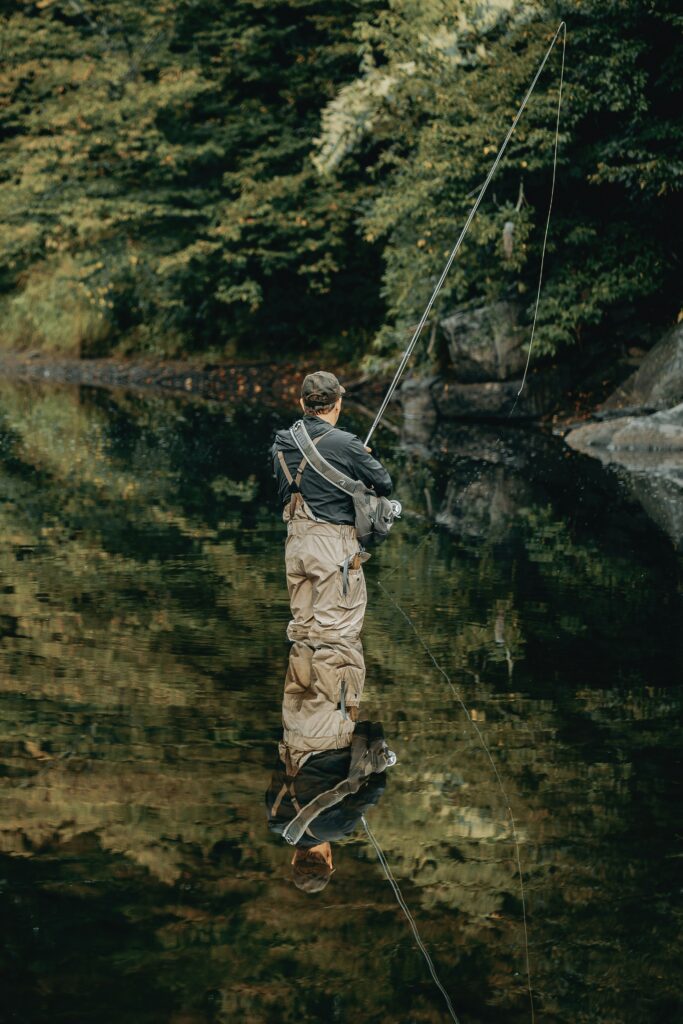
Fishing Throughout the Seasons
Northern California offers exceptional fly fishing opportunities year-round. Each season brings unique challenges and rewards for anglers. Weather patterns and fish behavior shift throughout the year, creating diverse experiences on the water.
Spring Fly Fishing
As winter fades, spring breathes new life into Northern California's rivers and streams. You'll find rainbow trout becoming more active as water temperatures rise. This is an excellent time to target them with nymphs and dry flies.
Look for hatches of blue-winged olives and March browns. These insects provide ample food for hungry fish emerging from their winter slowdown. Rivers like the McCloud and Upper Sacramento offer prime spring fishing.
Steelhead fishing can also be productive in early spring. Coastal rivers may still host late-run winter steelhead. Pack your waders and be prepared for varying water conditions as snowmelt can affect clarity and flow.
Summer's Fishing Delights
Summer brings warm weather and clear waters to Northern California. This is peak season for fly fishing enthusiasts. You'll find abundant hatches of terrestrials, drakes, and blue-winged olives.
The McCloud River, Upper Sacramento River, and Pit River shine during summer months. Early mornings and evenings often provide the best action. Consider using lighter tippets and smaller flies as fish become more selective in clear water.
High mountain streams offer a refreshing escape from summer heat. Brook trout and golden trout await in scenic alpine settings. Remember to check regulations, as some high-elevation waters have specific seasons and restrictions.
Fall Fishing Opportunities
Autumn ushers in cooler temperatures and exciting fishing opportunities. This is prime time for targeting migratory species. Chinook Salmon arrive in Northern California rivers near the end of the year, followed by Coho Salmon a few weeks later.
Fall-run steelhead also begin their journey upstream. The Feather River and Yuba River are popular destinations for these hard-fighting fish. Swinging flies with a two-handed rod can be highly effective.
Resident trout become more active as water temperatures drop. They feed aggressively to prepare for winter. Try using streamers to imitate baitfish and trigger strikes from larger trout.
Winter Fishing Challenges
Winter presents unique challenges and rewards for dedicated anglers. Many rivers remain open year-round, offering solitude and the chance for trophy catches. You'll need to dress warmly and be prepared for changing conditions.
Nymphing becomes a go-to technique as insect activity slows. Focus on deep pools and slow runs where fish conserve energy. The Lower Sacramento River is known for excellent winter rainbow trout fishing.
Steelhead fishing can be productive in coastal rivers during winter months. Be prepared to cover water and adapt to changing river levels. Winter steelhead are often larger and more aggressive than their summer-run counterparts.
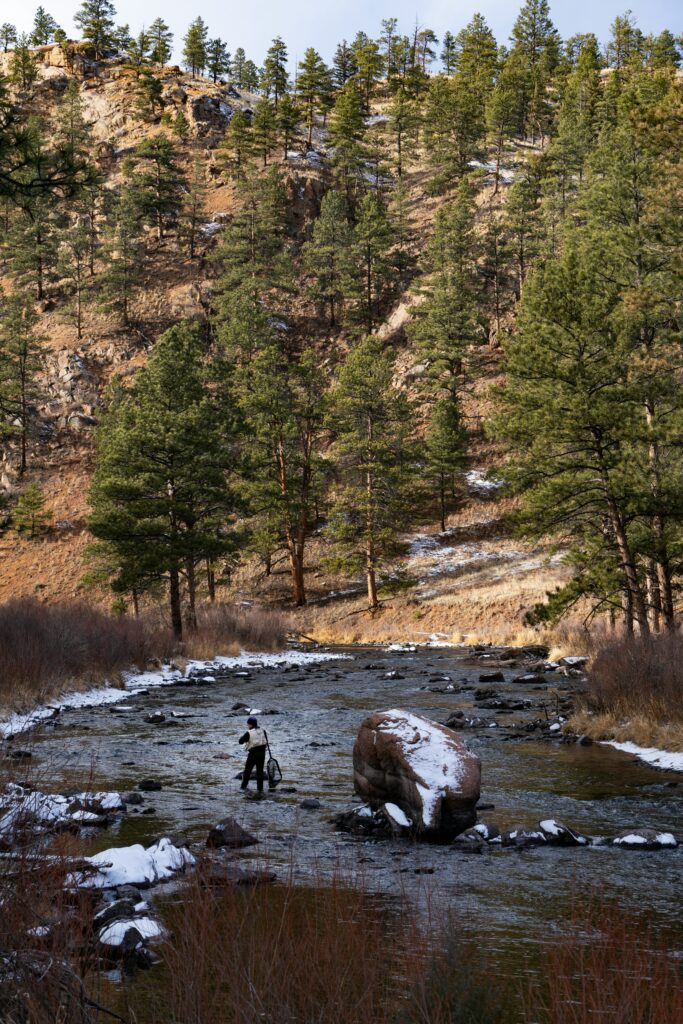
Other Notable Fly Fishing Locales
Northern California offers several hidden gems for fly fishing enthusiasts. These lesser-known spots provide unique experiences and abundant opportunities to catch various trout species.
McCloud River's Charm
The McCloud River is a fly fishing paradise nestled in the Shasta-Trinity National Forest. You'll find pristine waters teeming with rainbow, brown, and brook trout.
The river's three-tiered waterfall system creates diverse fishing environments. Upper McCloud offers challenging pocket water fishing, while the Lower McCloud provides more accessible runs and pools.
Remember to bring your 4-6 weight rod and a selection of nymphs, dry flies, and streamers. The best times to visit are late spring through early fall when hatches are most active.
Hat Creek's Serenity
Hat Creek is renowned for its crystal-clear waters and abundant insect life. This spring-fed stream maintains a consistent temperature year-round, supporting a healthy trout population.
You'll find mostly rainbow trout here, with some brown trout in the mix. The creek's flat water can be challenging, requiring stealthy approaches and precise casting.
Popular fly patterns include PMDs, caddis, and midges. Don't forget to try terrestrial patterns during summer months. The creek is fishable year-round, but spring and fall offer the best conditions.
The Quiet Stretch of Smith River
The Smith River, located in California's northwest corner, is a hidden treasure for fly anglers. Its clear, jade-green waters host steelhead and coastal cutthroat trout.
Winter steelhead fishing is particularly exciting here. You'll need heavier gear (7-8 weight rods) and larger flies for these powerful fish.
The river's remote location ensures less crowded fishing conditions. Be prepared for changing weather and bring appropriate gear. Fall and winter are prime times for steelhead, while summer offers excellent dry fly fishing for cutthroat trout.

Techniques for Difficult Fishing Conditions
Northern California's diverse waterways can present challenges for fly anglers. Adapting your approach with the right techniques can help you succeed even when conditions are tough.
Mastering Nymphing
Nymphing is a highly effective technique for catching trout in challenging situations. When fish aren't rising, focus on deep, slow-moving water where trout tend to hold during colder months. Use a strike indicator to detect subtle takes.
Try the “high-stick” nymphing method. Keep most of your line off the water to reduce drag and achieve a more natural drift. This technique is particularly useful in pocket water and fast runs.
Experiment with different nymph patterns and sizes. Carry a variety of weighted and unweighted flies to match the water depth and current speed. Don't forget to adjust your leader length and tippet size based on water clarity and fish wariness.
Adjusting Your Approach with Streamers
When fish are sluggish or water visibility is poor, streamers can be your secret weapon. These larger flies imitate baitfish and trigger predatory instincts in trout.
The muddler minnow is a versatile streamer pattern that works well in Northern California waters. Try stripping it with varied retrieves to mimic injured prey.
In high or discolored water, use darker, bulkier streamers for better visibility. Cast across and slightly upstream, then let your fly swing through likely holding areas. Add short, erratic strips to imitate a fleeing baitfish.
Don't be afraid to experiment with sink tips or weighted flies to get your streamer down to where the fish are holding.
When to Use Dry Flies
Even in challenging conditions, there are times when dry flies can be effective. Look for calm areas where fish might be sipping insects off the surface, especially during hatches.
On windy days, focus on sheltered areas near banks or behind large rocks. Use larger, more visible patterns like stimulators or hoppers that can cut through the chop.
During colder months, midday can be prime time for dry fly action as water temperatures warm slightly. Keep an eye out for 189,454 miles of rivers and streams in California where you might find rising fish.
Consider using the “float-and-fly” technique in stillwaters. This method involves suspending a small jig or nymph beneath a float, allowing for a natural presentation in lakes and ponds.
Fishing Regulations and Conservation
When fly fishing in Northern California, it's crucial to understand and follow state laws while also contributing to conservation efforts. These practices help preserve fish populations and protect the beautiful natural habitats for future generations.
Understanding State Laws
You need to be aware of California's fishing regulations before casting your line. Recreational fishing seasons vary by species and location, so check the current rules for your target fish. Remember to obtain a valid California fishing license before your trip.
Pay attention to daily bag limits and size restrictions. For example, white sturgeon fishing has specific regulations you must follow. Be mindful of protected areas and catch-and-release zones.
Use only approved fishing methods and gear. Some waters may have special tackle restrictions, like barbless hooks or artificial lures only.
Contribute to Conservation Efforts
You can play a vital role in preserving Northern California's aquatic ecosystems. Practice catch-and-release whenever possible to maintain healthy fish populations. Use proper handling techniques to minimize stress on the fish.
Support local conservation groups by volunteering or donating. These organizations often work on habitat restoration projects and advocate for sustainable fishing practices.
Report any pollution or illegal fishing activities you witness to the authorities. By being a responsible angler, you help ensure the long-term health of Northern California's waterways.
Consider participating in citizen science projects that monitor fish populations or water quality. Your efforts can provide valuable data for researchers and policymakers.
Gear and Equipment Maintenance
Proper care of your fly fishing gear is crucial for its longevity and performance. After each fishing trip, rinse your rod and reel with fresh water to remove dirt and salt. Dry them thoroughly before storage.
Clean your fly line regularly with mild soap and water. Apply line dressing to keep it supple and floating well. Store your line loosely coiled to prevent memory.
Inspect your flies and leaders for wear and replace as needed. Keep flies in a waterproof box to prevent rust and maintain their shape.
Your waders deserve special attention. Rinse them inside and out, then hang to dry. Apply a waterproofing spray annually to maintain their effectiveness.
Store rods in tubes or cases when not in use. Keep reels in protective pouches to prevent scratches and dust accumulation.
Periodically lubricate your reel's moving parts with a light oil. Clean and oil your ferrules to ensure smooth assembly and disassembly of rod sections.
Remember to sharpen your hooks regularly. A small file or hook hone works well for this task.
By following these simple maintenance steps, you'll ensure your fly fishing equipment stays in top condition for many seasons to come.

